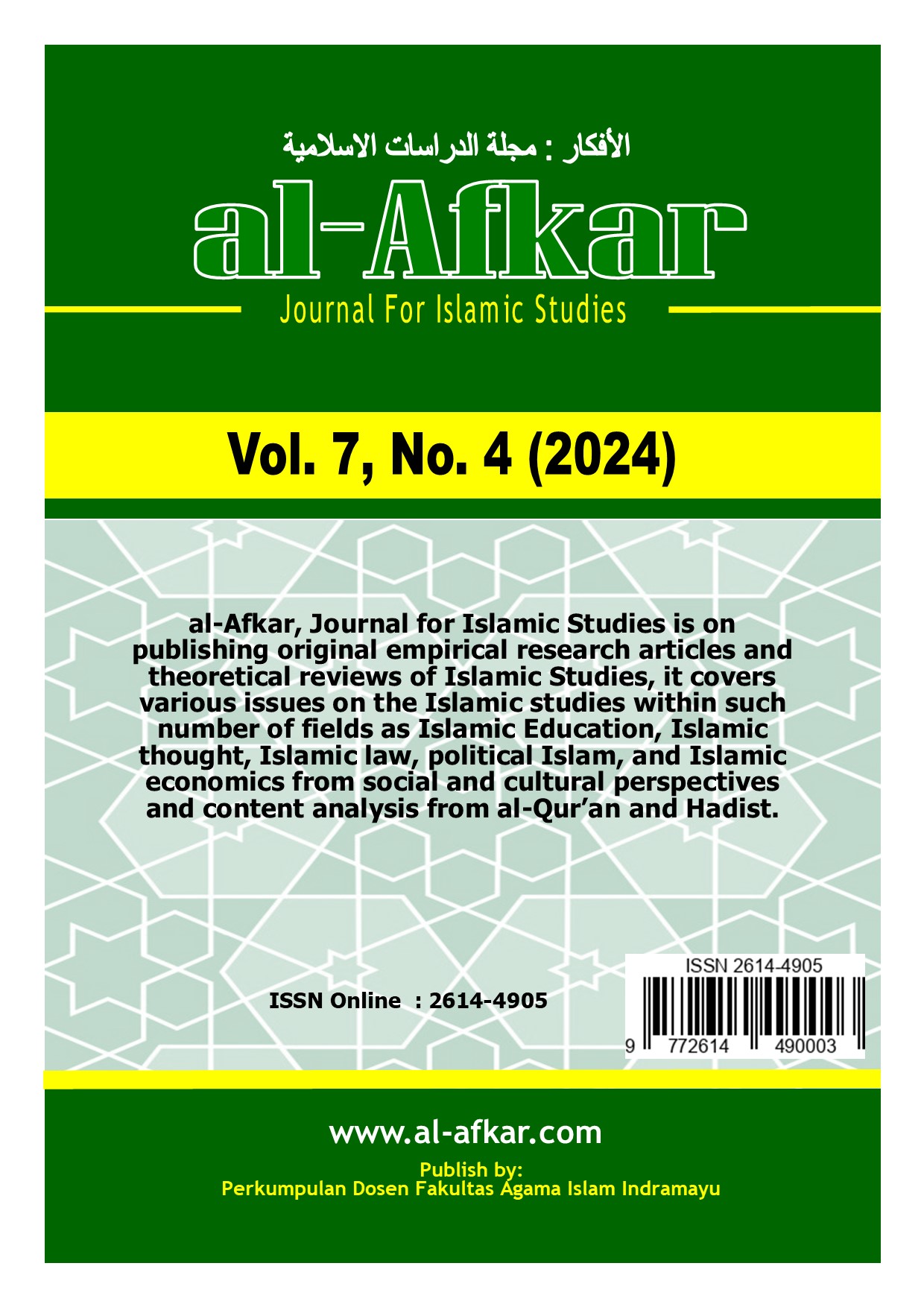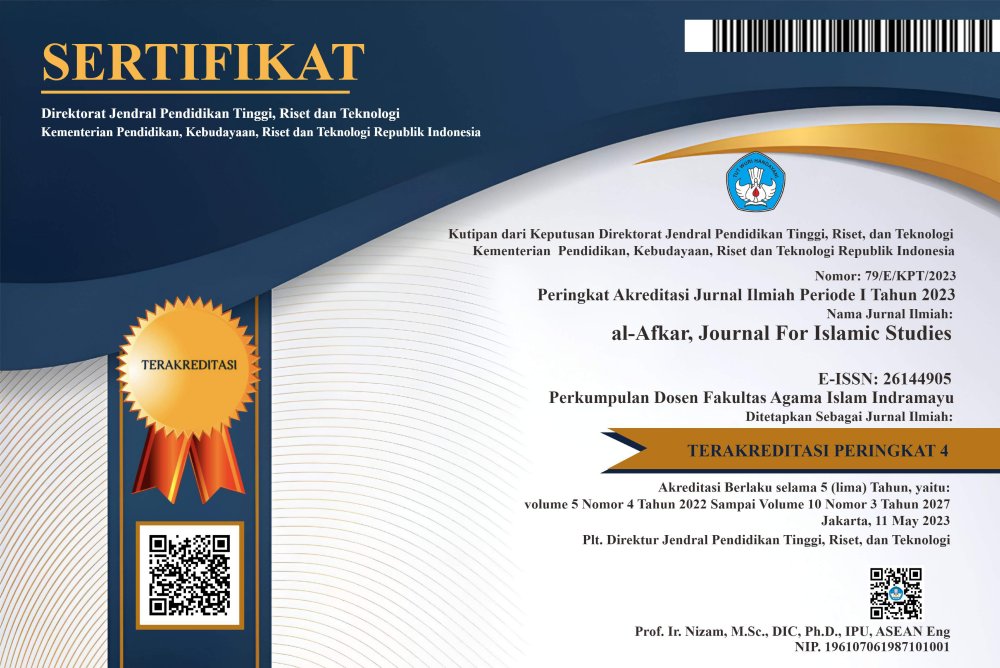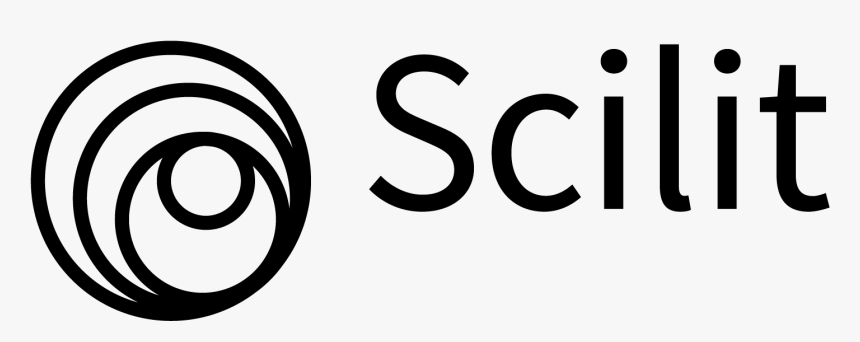The Problem of Using ICT-Based PAI Learning Media at SMP Al Banna School, Denpasar City
DOI:
https://doi.org/10.31943/afkarjournal.v7i4.1142Keywords:
Teacher Problems, PAI Learning Media, Information and Communication TechnologyAbstract
The use of Islamic Religious Education (PAI) learning media based on Information and Communication Technology (ICT) has become the main focus in increasing the effectiveness of the learning process in the digital era. This research aims to identify problems that arise in the application of ICT-based PAI learning media, as well as uncovering potential solutions to improve the quality of its use. This research uses a qualitative method with a descriptive-analytical approach by collecting data through observation, interviews and literature study. The research results show several problems faced in using ICT-based PAI learning media, including teachers' lack of technological understanding and skills, limited student access to technology, and challenges in integrating religious values in a digital context. Solution approaches are proposed to overcome these problems, including intensive training for teachers in integrating technology into the learning process, developing PAI digital content that is in line with the curriculum and religious values, as well as increasing student access to technology through supportive school policies.
Downloads
References
Arsyad, Azhar, Teni, and Nurrita. “Pengembangan Media Pembelajaran Untuk Meningkatkan Hasil Belajar Siswa.” Jurnal Al-Misykat 3, no. 1 (2018).
Lase, Delipiter. “Pendidikan Di Era Revolusi Industri 4.0.” SUNDERMANN: Jurnal Ilmiah Teologi, Pendidikan, Sains, Humaniora Dan Kebudayaan 12, no. 2 (2019): 28–43. https://doi.org/10.36588/sundermann.v1i 1.18.
Maghfiroh. “Pola Pembelajaran Everyone Is a Teacher Here Sebagai Alternative Peningkatan Proses Belajar Aktif Peserta Didik.” JBidayatuna: Urnal Pendidikan Guru Mandrasah 3, no. 2 (2020): 225–38.
Mahsun, M, F Surayyah, and M Shohib. “Kajian Konseptual Dalam Kitab Risalatul Mu’awanag Karya Sayyid Abdullah Bin Alwi Al Haddad.” Jurnal Ilmu Keislaman: Al-Thiqah 3, no. 2 (2020).
Nasution, S. Metode Research (Penelitian Ilmiah). Edisi I Ce. Jakarta: Bumi Aksara, 2016.
Nuryana, Zalik. “, Pemanfaatan Teknologi Informasi Dalam Pendidikan Agama.” Jurnal Tamaddun: FAI UMG 19, no. 1 (2018). http://journal.umg.ac.id/index.php/tamad dun/article/download/818/681/ .
Sani, Ridwan Abdullah. Inovasi Pembelajaran. Jakarta: Bumi Aksara, 2016.
Sanjaya, Wina. Perencanaan Dan Desain Sistem Pembelajaran. Jakarta: Prenada Media Group, 2010.
Santori, Djam’an, and Aam Komariah. Metodologi Penelitian Kualitatif. Bandung: Alfabeta, 2009.
Sugiyono. Metode Penelitian Kuantitatif, Kualitatif Dan R & D. Bandung: Alfabeta, 2010.
Yusril Ihza, Dkk. Strategi Dan Metode Pembelajaran. Pekalongan: STAIN Pekalongan Press, 2015.
Downloads
Published
How to Cite
Issue
Section
License
Copyright (c) 2024 Dwi Yulia Ulfiani, Hakimuddin Salim, Muh. Nur Rochim Maksum

This work is licensed under a Creative Commons Attribution 4.0 International License.



















